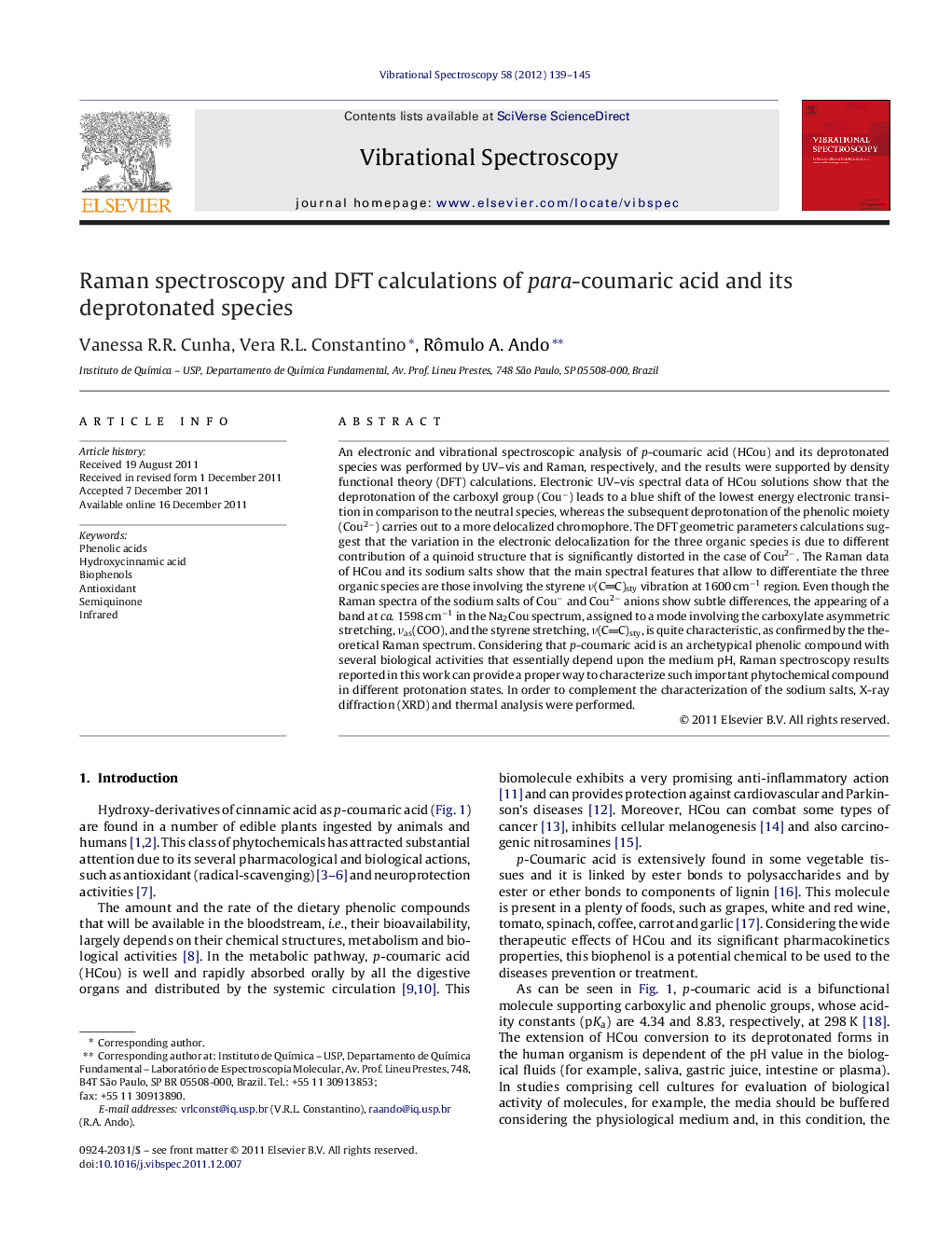| Article ID | Journal | Published Year | Pages | File Type |
|---|---|---|---|---|
| 1249995 | Vibrational Spectroscopy | 2012 | 7 Pages |
An electronic and vibrational spectroscopic analysis of p-coumaric acid (HCou) and its deprotonated species was performed by UV–vis and Raman, respectively, and the results were supported by density functional theory (DFT) calculations. Electronic UV–vis spectral data of HCou solutions show that the deprotonation of the carboxyl group (Cou−) leads to a blue shift of the lowest energy electronic transition in comparison to the neutral species, whereas the subsequent deprotonation of the phenolic moiety (Cou2−) carries out to a more delocalized chromophore. The DFT geometric parameters calculations suggest that the variation in the electronic delocalization for the three organic species is due to different contribution of a quinoid structure that is significantly distorted in the case of Cou2−. The Raman data of HCou and its sodium salts show that the main spectral features that allow to differentiate the three organic species are those involving the styrene ν(CC)sty vibration at 1600 cm−1 region. Even though the Raman spectra of the sodium salts of Cou− and Cou2− anions show subtle differences, the appearing of a band at ca. 1598 cm−1 in the Na2Cou spectrum, assigned to a mode involving the carboxylate asymmetric stretching, νas(COO), and the styrene stretching, ν(CC)sty, is quite characteristic, as confirmed by the theoretical Raman spectrum. Considering that p-coumaric acid is an archetypical phenolic compound with several biological activities that essentially depend upon the medium pH, Raman spectroscopy results reported in this work can provide a proper way to characterize such important phytochemical compound in different protonation states. In order to complement the characterization of the sodium salts, X-ray diffraction (XRD) and thermal analysis were performed.
